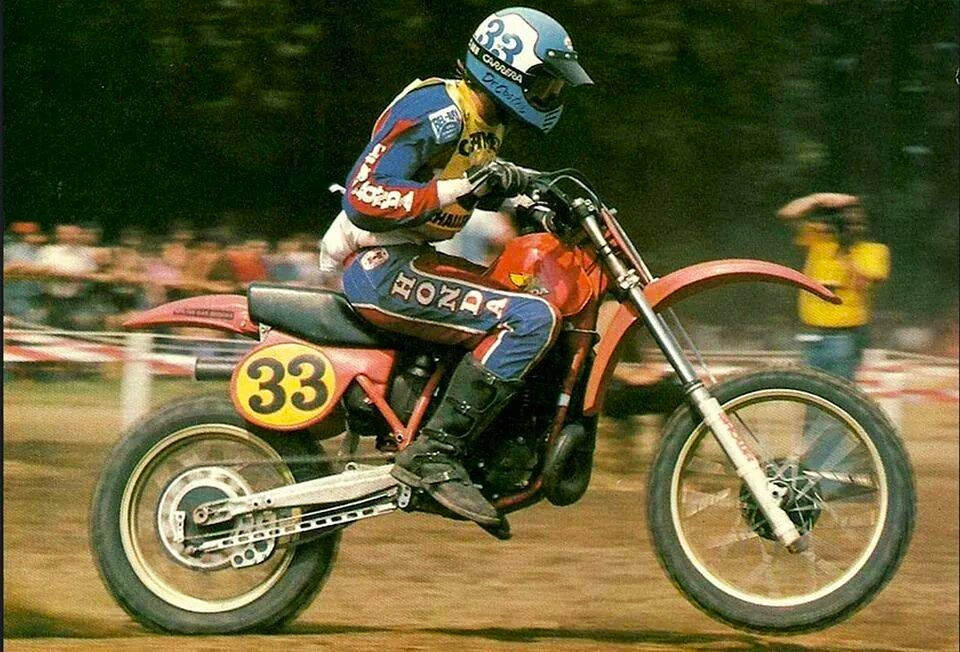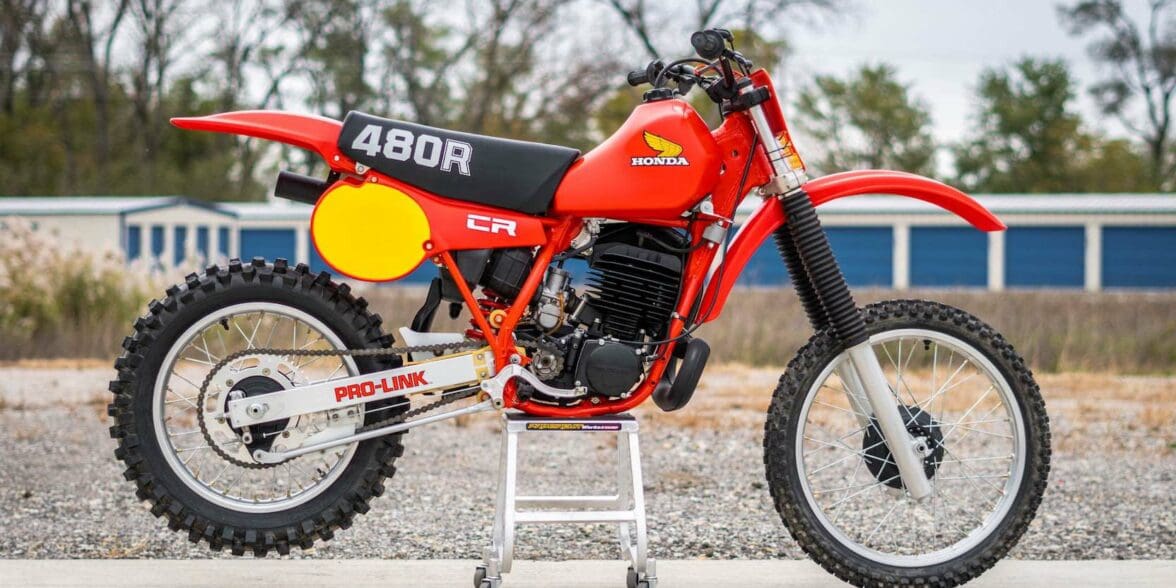Last month’s little ditty on on-road two-stokes was just the start. And while we love us some asphalt action, there’s no doubting that two-strokes rock just as hard off-road as they do on. These manufacturers’ persistence in making their dirt-bound ring-a-ding-dingers long after giving up on their on-road models should tell us that there’s something pretty magical about this heady burnt-oil-and-dirt mix. And that’s because there really is.
And while choosing the best ones of the bunch might be similar to choosing favourites amongst your own offspring, it’s a task we’ve assigned ourselves unflinchingly. We’re just really good like that. And with contenders from far-flung countries like Japan, Germany and Spain, it’s going to be a bit of a world tour, too. What’s not to like? So get into your off-road riding gear and get out your premix containers. Here we go.
5. ’74 Yamaha YZ360
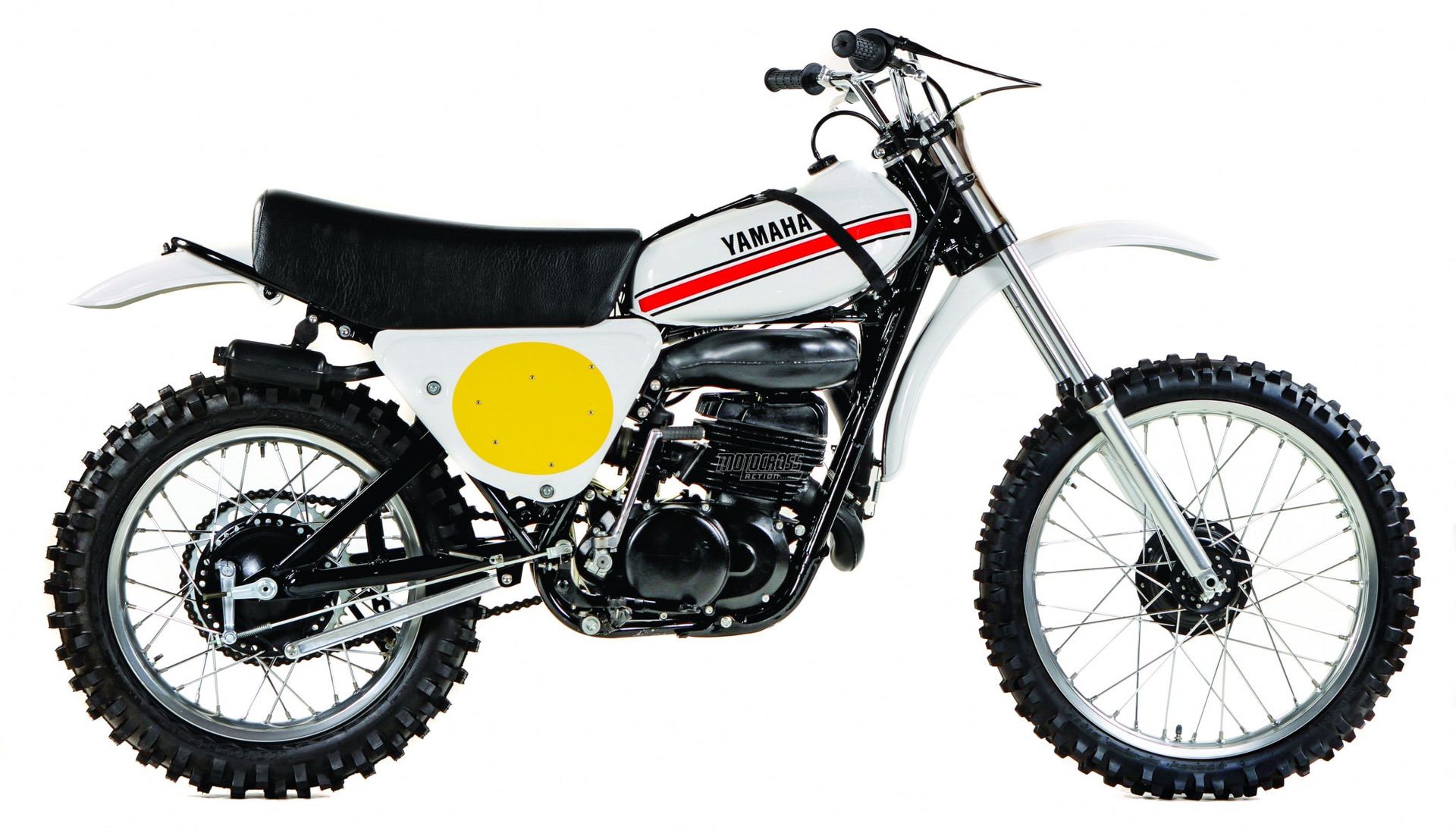
Probably the top of the Japanese crop when it comes to off-road two-strokes, Yamaha really hit their stride with the YZ360. So much so that its famous “YZ” initials are still talked about in hushed tones to this very day—in fact, Yamaha is bringing YZ back for 2023. The “YZ360A” (to give it its full nomenclature), was one of those rare bikes that was virtually identical to the ones the factory was racing at the same time in global MX competitions.
Bearing exactly nothing in common with any other Yamaha bikes of the time, those fortunate enough to have cracked one open report that not only were they clearly hand-assembled, but that all of the bike’s internal components were bespoke racing parts fitted, balanced and adjusted to within an inch of their lives. And believe it or not, Yamaha advised customers to replace the piston rings after every damn race as the cylinder wasn’t able to be bored out. That’s crazy talk…
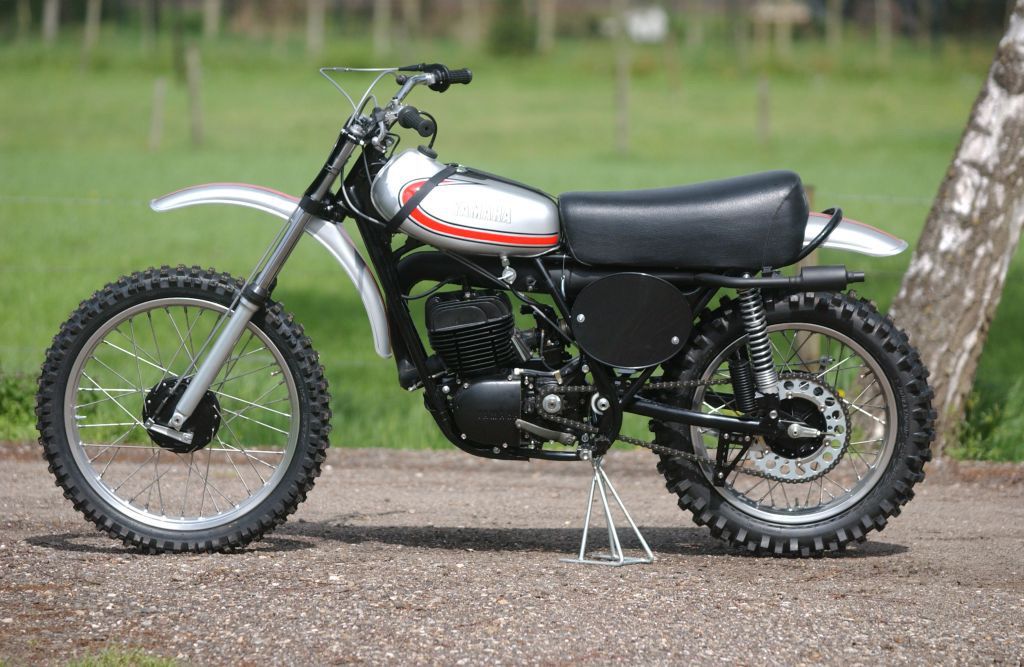
We’re pretty confident in saying that they went like stink, too. And what with the eye-watering price (at the time), there would likely have been riots at Yamaha dealerships if they hadn’t. With a powerband that was micrometres wide, the bike’s real advantage over the competition was its featherweight, er, weight.
Coming in at 212 lbs (96 kgs) and with 30 lb/ft of torque (power figures are suspiciously absent from Yamaha brochures and ads of the time) you can easily imagine the get-up-and-go the YZ had. Soon, the MX world would be infatuated with long-travel rear suspension set-ups, so in many ways the YZ was also the end of an era.
If you ever get the chance to own one, you’d be certifiable not to grab it. Steve McQueen did. It’ll cost you around $8,500 US.
4. ’73 Honda CR125M ‘Elsinore’
“Elsinore”. The name that launched one million dust baths, and another Steve McQueen favourite, too. Of all the bikes here, it’s probably the Elsie that most affected the global MX scene we know today.
Named after the Lake Elsinore race in California, it was a massive backflip from a company that was run by a card-carrying two-stroke hater by the name of Soichiro Honda. And while we won’t go into the reasons why, they somehow managed to pull the world’s best two-stroke out of their proverbials, even if it was rapidly overtaken by their Northeast Asian competitors in a matter of a few short years.
Not really on the bleeding edge of the global dirt bike boom of the day, part of the bike’s success was tied to the fact that Honda made so damn many of them. As someone famously said, “The Honda Elisinore won everything simply because there were so many of them competing”.
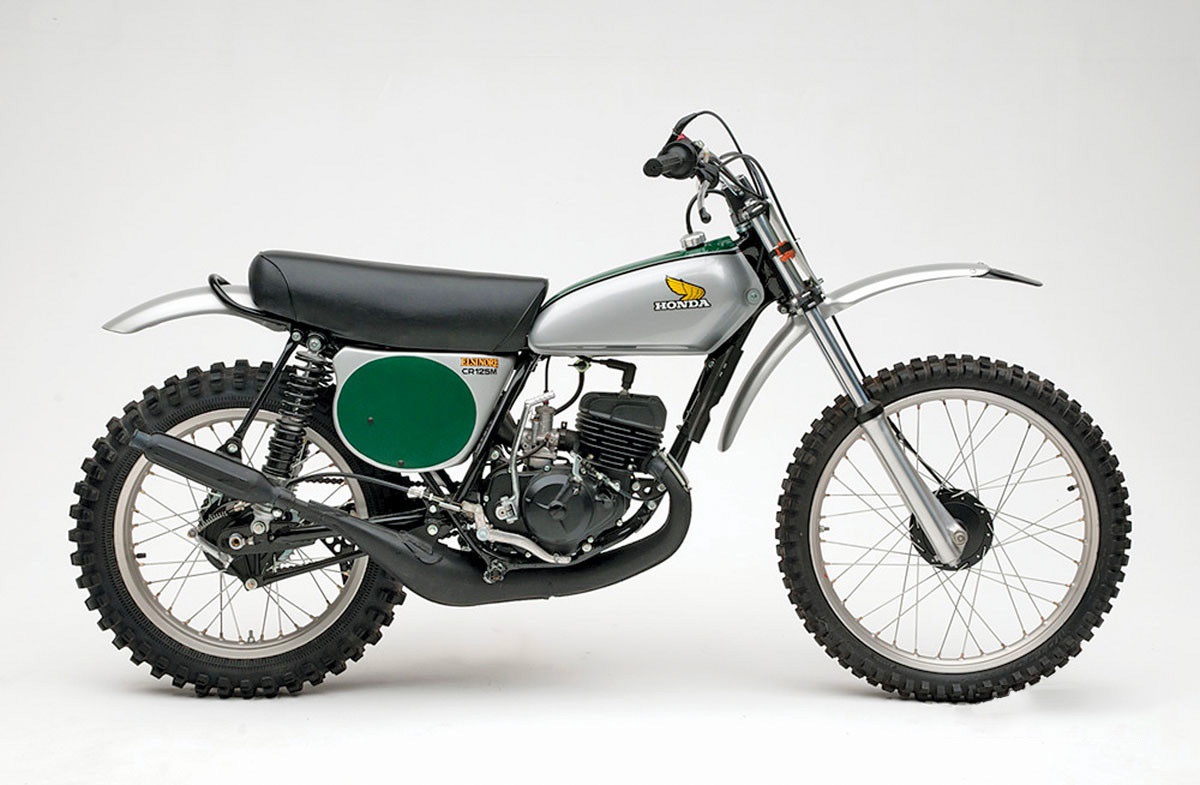
“Elsinore”. The name that launched one million dust baths, and another Steve McQueen favourite, too. Of all the bikes here, it’s probably the Elsie that most affected the global MX scene we know today.
Named after the Lake Elsinore race in California, it was a massive backflip from a company that was run by a card-carrying two-stroke hater by the name of Soichiro Honda. And while we won’t go into the reasons why, they somehow managed to pull the world’s best two-stroke out of their proverbials, even if it was rapidly overtaken by their Northeast Asian competitors in a matter of a few short years.
Not really on the bleeding edge of the global dirt bike boom of the day, part of the bike’s success was tied to the fact that Honda made so damn many of them. As someone famously said, “The Honda Elisinore won everything simply because there were so many of them competing”.
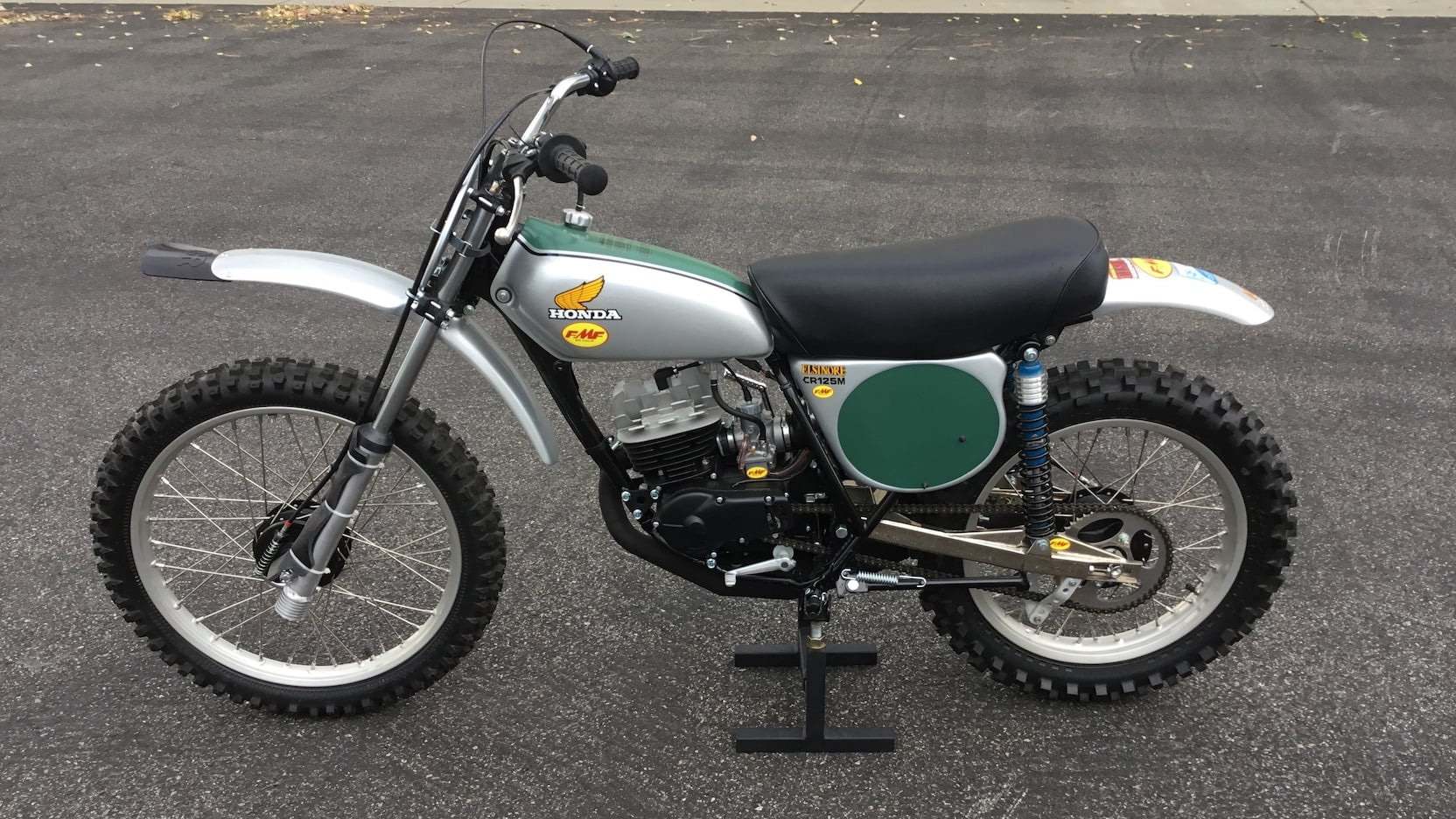
But don’t get me wrong; they were a great bike. With a paltry 82kg (179lb) curb weight and a little over 20 horsies, it wasn’t far behind the YZ in power-to-weight ratio terms. And with Honda’s legendary engineering making it go, there’s no doubt that you could ride it to the moon and back before it’d gently ask you to service it. Or not.
Also like the Yammie, the Elsi too would die a quick and tragic death after Suzuki and Maico engineers realised around this time that monoshocks and more travel in the rear of motocrossers was a game changer. These days, good examples will set you back around $6,000 US.
3. ’74 Bultaco Pursang
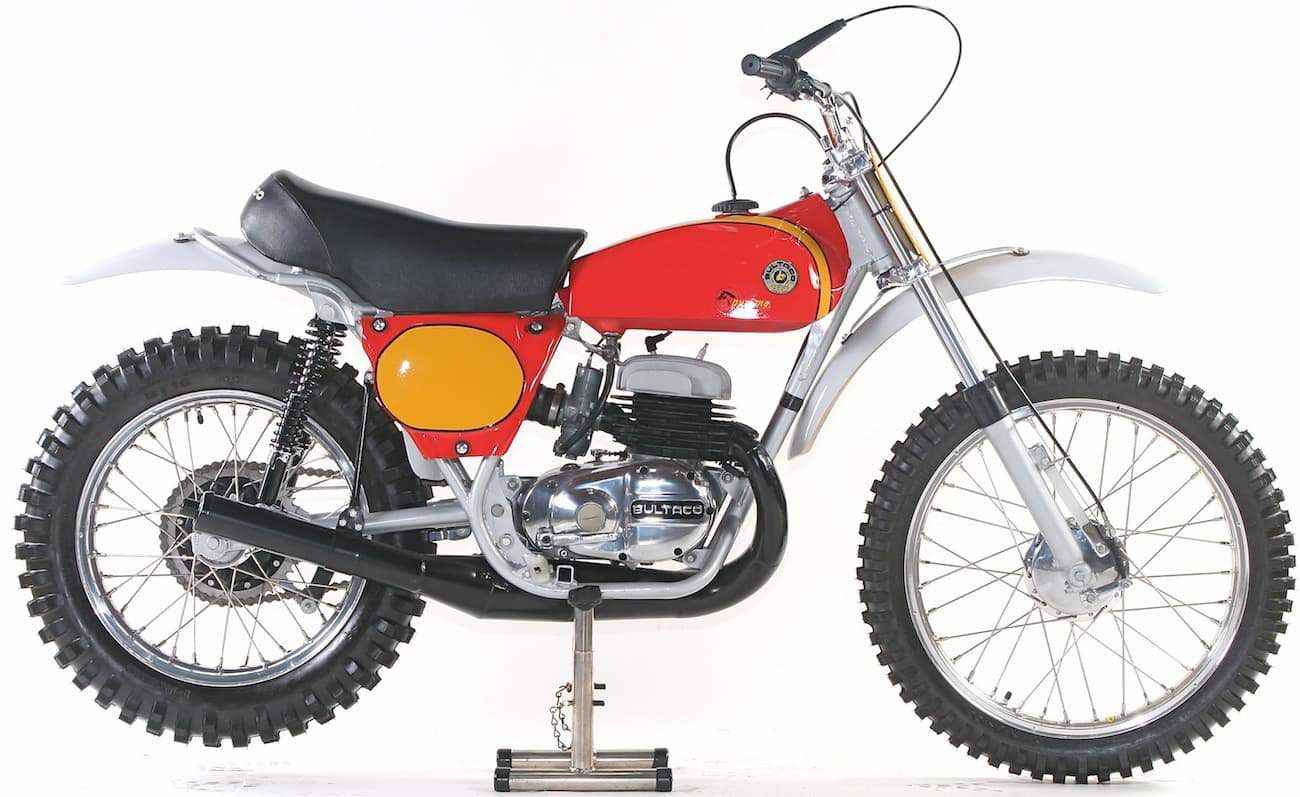
Everyone loves ‘Tacos, right? Well in this case, it’s the same for the bike as it is for the Mexican tortilla masterpiece. And unlike Honda, Spanish manufacturer Bultaco was there from the beginning of the meal.
As America embraced the offroad moto world, Bultaco handed out some pretty tasty snacks, but in ‘74 the penny dropped when good ol’ Joe and Jolene Dirtbike realised that the showroom “Pursang” (“Pure-blooded” in Spanish) models were as close as look at you to the bike ridden by Jim Pomeroy when he won the 1973 Spanish 250 GP on a Factory ‘Taco. Not known for their reliability, the bikes still look like a million pesos—and with a low seat and comfortably set fork angle, the things would slide for days on a track.
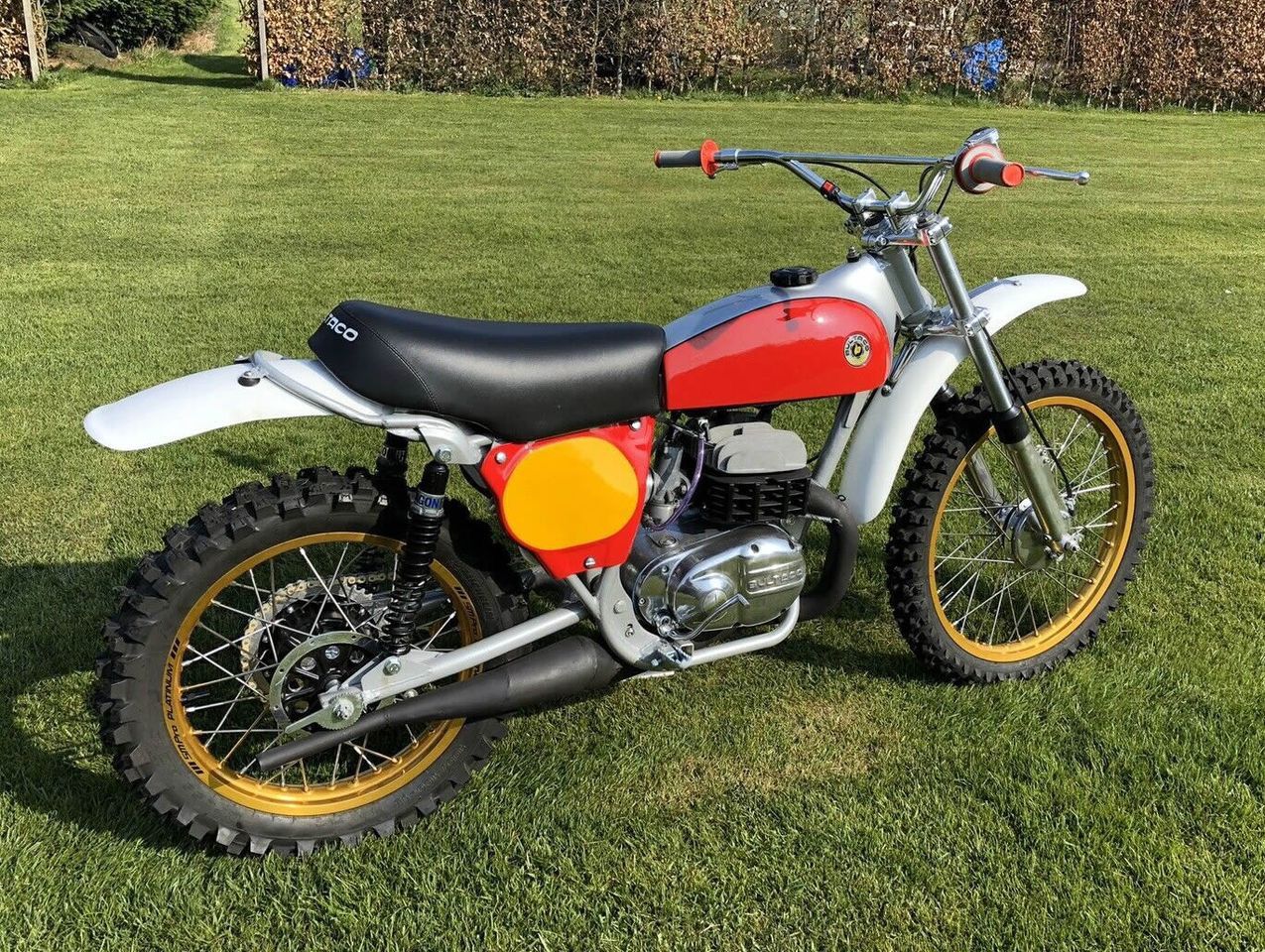
The factory claimed 39 ponies, but that’s probably more accurate for Jim’s race bike than the ones in the stores. And while it didn’t make them go any faster, there was something about the bike’s overall finish and the factory’s attention to detail in terms of metal finishing, paint and plastics that just made those poor, helpless riders who happened to wander into their local Bultaco dealers go weak at their already-sore knees.
And not to sound like a broken record here, but the Pursang’s days were also numbered. This time, it was more to do with corporate hijinx than the bike being beaten on the track. You can pick up a mint Pursang these days for around USD $6,000, but it’ll still break down (and parts aren’t exactly in plentiful supply these days).
2. ’81 Maico Mega 2
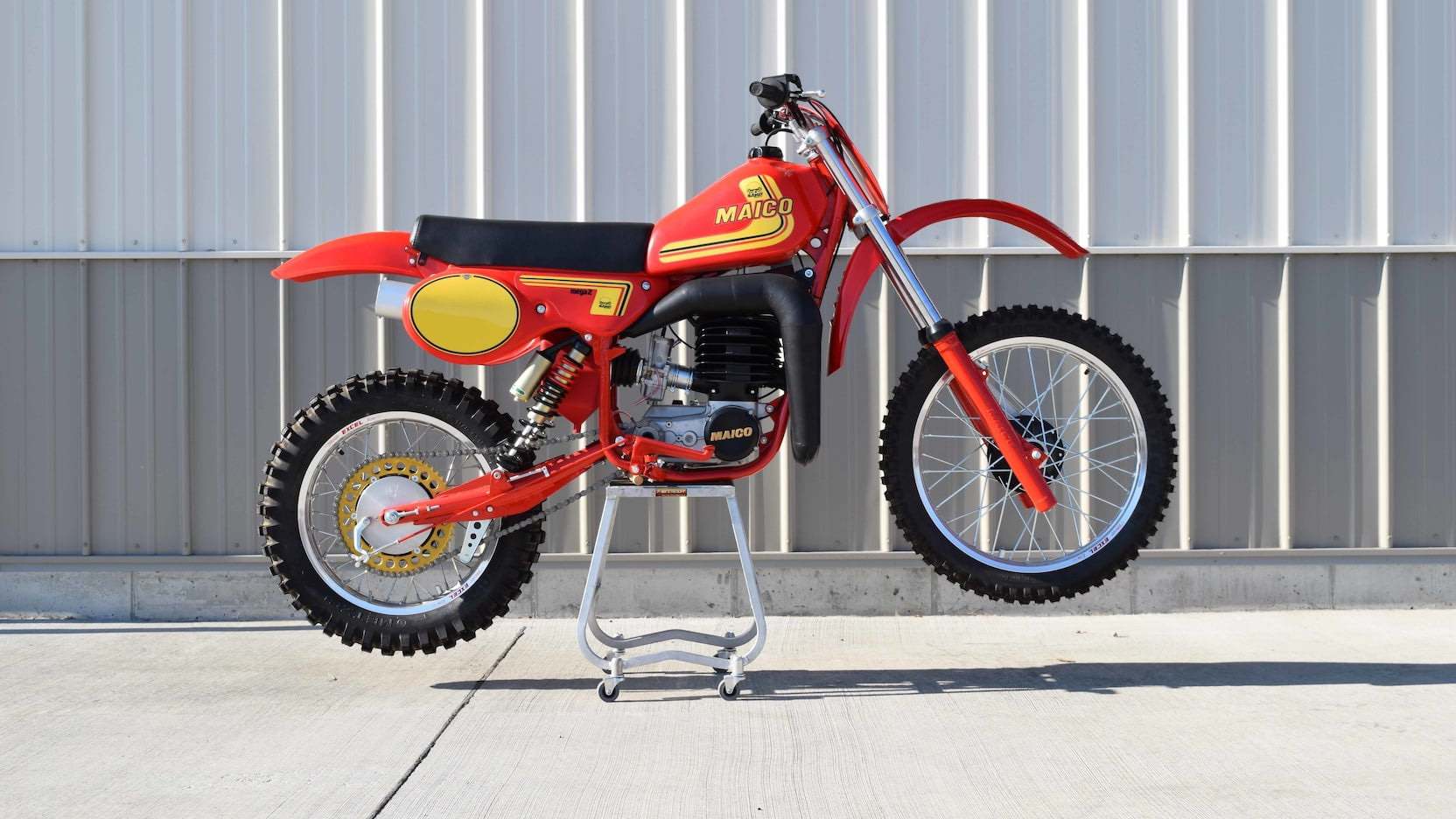


What a difference a few years make! And look at the travel on that rear! Looking much more like a modern MX bike than our three previous winners, the German-made Maico Mega 2 was an absolute kick in the pant eggs for the rest of the world’s MX manufacturers. Here was a bike that was more powerful and better handling than almost any other bike of the day.
Riders talk about power delivery that felt like the moto gods themselves were pushing you forward, and while it looked not too dissimilar to the Maico, you better believe that those rascally Germans were a notch or two above the Spaniards when it came to reliability. Of course, the fact that it had 490cc of get-up-and-go probably had a lot to do with it, but for a brief, shining moment, the Mega 2 was a world-beater.
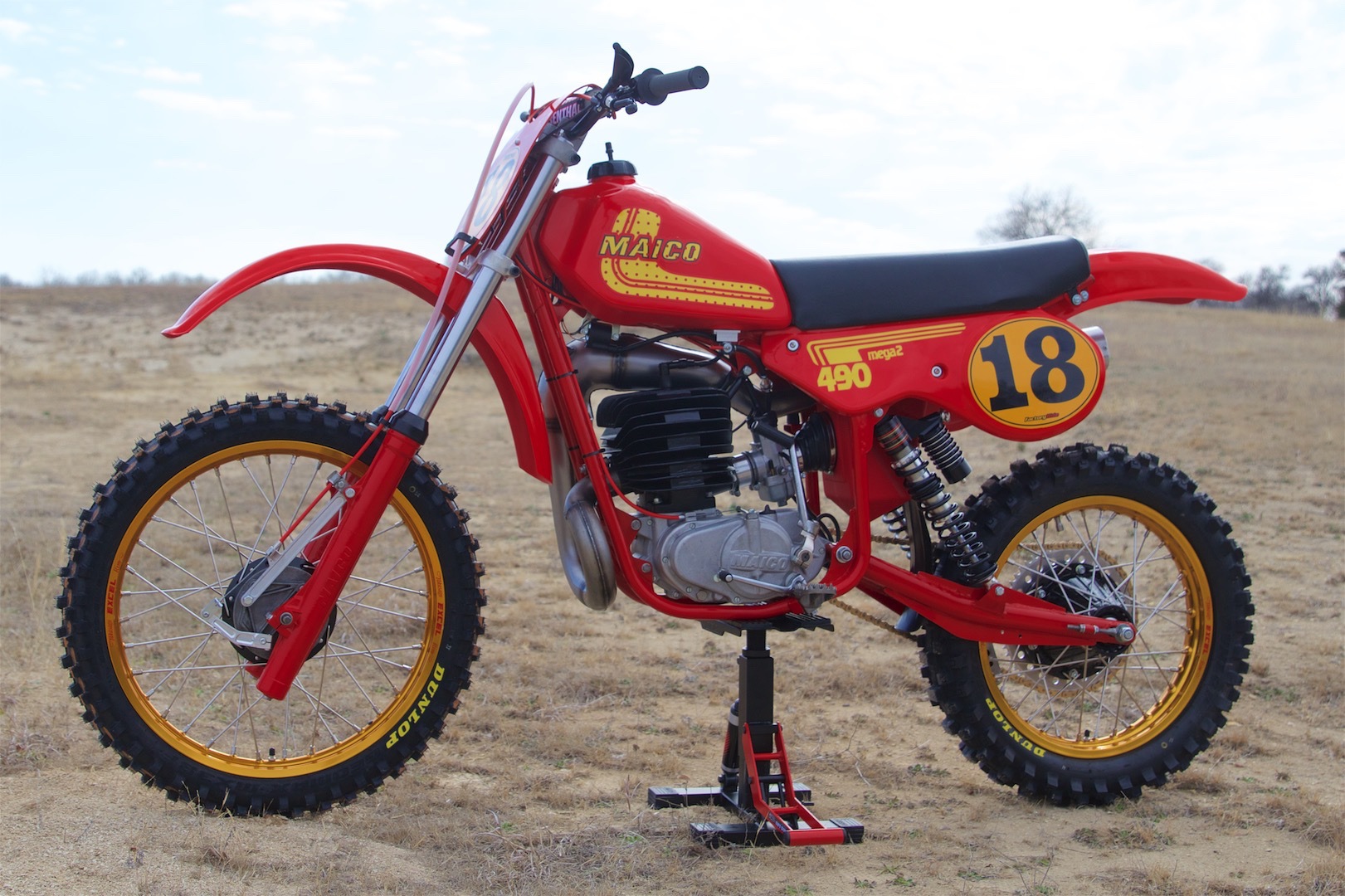


Of course after this Deutsch salvo across the bows of global MX, people soon began to realise that half a litre of two-stroke engine was a BIG handful—even for the pros. And that classic, “Win on Sunday, sell on Monday” mentality of the manufacturers began to look a little more dangerous than it did a meagre decade before. The big buggers were getting heavier, too.
While light by today’s BMW GS standards, the Mega here weighed in at around 106 kgs, and its power output on a new or well-tuned race model was an eye watering 53 hp. That’s two-and-a-bit Elisnores, buddy. Ouch. You’ll need around $13,000 US to get yourself on one these days.
1. ’83 Honda CR480R
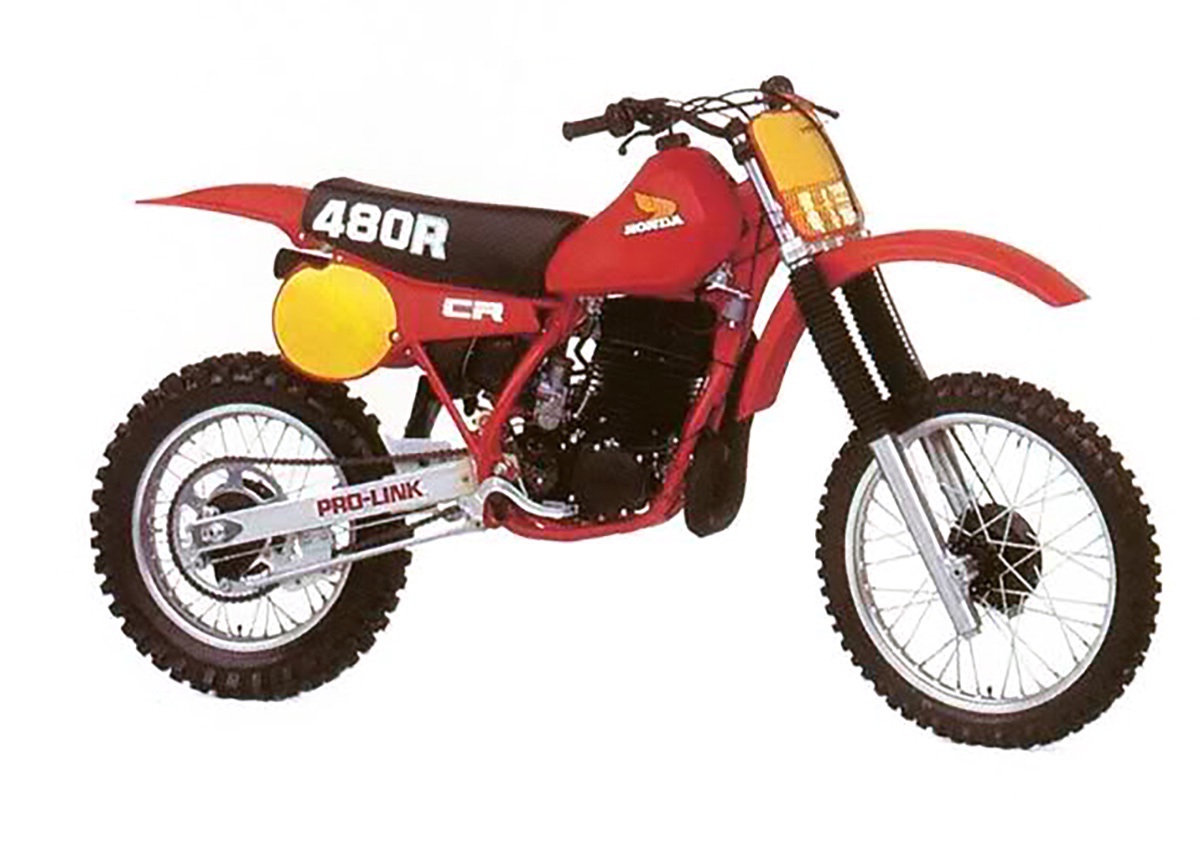


Again existing in that twilight zone that was the early ‘80s open class two-stroke MX world, clearly Honda were still using their “more is more” bike design ethos. Know that within three short years, this bike’s smaller prodigy—namely the ’86 CR250R—would rule the roost. But for now, capacity was king. And doesn’t the thing look amazing, too?
With the possible exception of the Maico above, it’s clear that bikes like this led the way forward with their designs. More sleek and less boxy than the aforementioned German, the Honda wasn’t the best MXer of the early ’80s, but if you won prizes for dropping jaws and being hung on teenager’s walls, the CR would be world champ for eternity and then some.
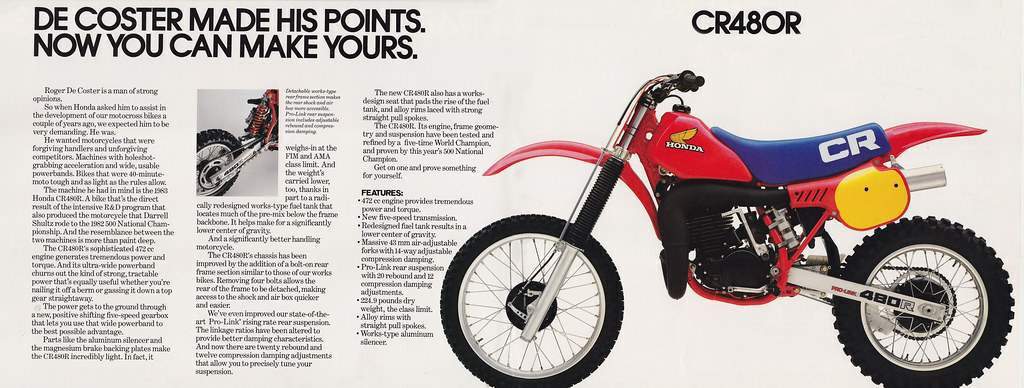


The key to the CR’s success was that Honda managed to make it feel more like a 250 than the half-litre bad boy that it really was; largely this was down to Honda making sure the thing was as slim as hell. This was also helped by the fact that it only weighed about 102 kgs (226 lbs) wet and still put out an awesome 50 hp.
Look closely and you’ll see a distinct lack of front brakes; the drums Honda bolted onto the CR were just barely enough to get the thing stopped, but you don’t win races by going slow, do you? MX magazines of the time were in awe of the bike, most commonly mentioning the fact that it was a real scalpel in the corners and that it jumped like a pegasus, too. You should be able to snap up a nice one these days for around $8,000.
